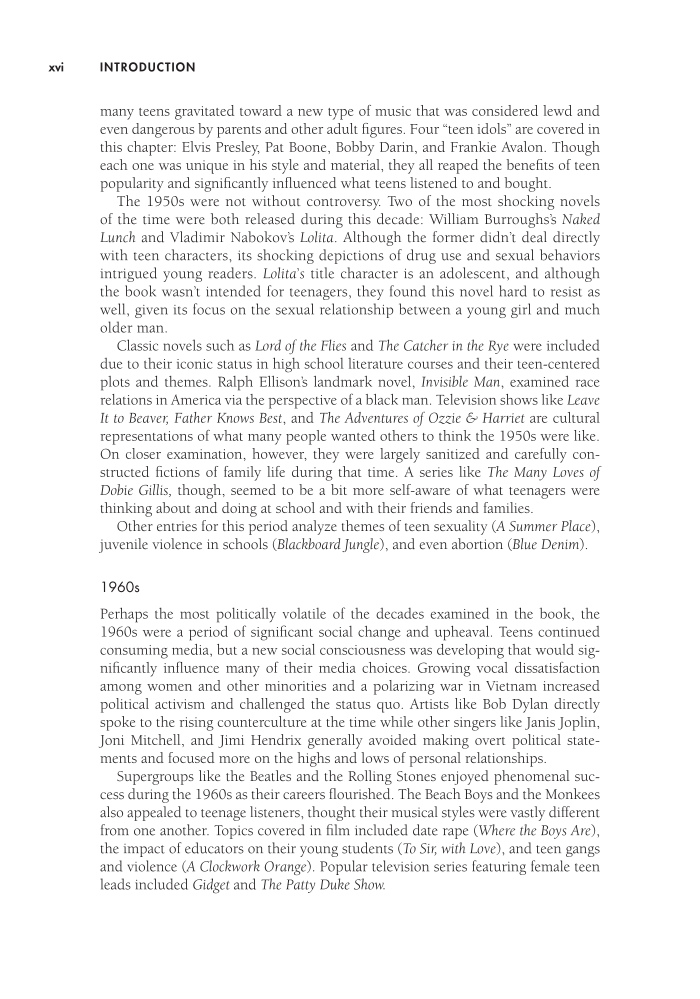xvi Introduction many teens gravitated toward a new type of music that was considered lewd and even dangerous by parents and other adult figures. Four “teen idols” are covered in this chapter: Elvis Presley, Pat Boone, Bobby Darin, and Frankie Avalon. Though each one was unique in his style and material, they all reaped the benefits of teen popularity and significantly influenced what teens listened to and bought. The 1950s were not without controversy. Two of the most shocking novels of the time were both released during this decade: William Burroughs’s Naked Lunch and Vladimir Nabokov’s Lolita. Although the former didn’t deal directly with teen characters, its shocking depictions of drug use and sexual behaviors intrigued young readers. Lolita’s title character is an adolescent, and although the book wasn’t intended for teenagers, they found this novel hard to resist as well, given its focus on the sexual relationship between a young girl and much older man. Classic novels such as Lord of the Flies and The Catcher in the Rye were included due to their iconic status in high school literature courses and their teen-centered plots and themes. Ralph Ellison’s landmark novel, Invisible Man, examined race relations in America via the perspective of a black man. Television shows like Leave It to Beaver, Father Knows Best, and The Adventures of Ozzie & Harriet are cultural representations of what many people wanted others to think the 1950s were like. On closer examination, however, they were largely sanitized and carefully con- structed fictions of family life during that time. A series like The Many Loves of Dobie Gillis, though, seemed to be a bit more self-aware of what teenagers were thinking about and doing at school and with their friends and families. Other entries for this period analyze themes of teen sexuality (A Summer Place), juvenile violence in schools (Blackboard Jungle), and even abortion (Blue Denim). 1960s Perhaps the most politically volatile of the decades examined in the book, the 1960s were a period of significant social change and upheaval. Teens continued consuming media, but a new social consciousness was developing that would sig- nificantly influence many of their media choices. Growing vocal dissatisfaction among women and other minorities and a polarizing war in Vietnam increased political activism and challenged the status quo. Artists like Bob Dylan directly spoke to the rising counterculture at the time while other singers like Janis Joplin, Joni Mitchell, and Jimi Hendrix generally avoided making overt political state- ments and focused more on the highs and lows of personal relationships. Supergroups like the Beatles and the Rolling Stones enjoyed phenomenal suc- cess during the 1960s as their careers flourished. The Beach Boys and the Monkees also appealed to teenage listeners, thought their musical styles were vastly different from one another. Topics covered in film included date rape (Where the Boys Are), the impact of educators on their young students (To Sir, with Love), and teen gangs and violence (A Clockwork Orange). Popular television series featuring female teen leads included Gidget and The Patty Duke Show.
Document Details My Account Print multiple pages
Print
You have printed 0 times in the last 24 hours.
Your print count will reset on at .
You may print 0 more time(s) before then.
You may print a maximum of 0 pages at a time.




















































































































































































































































































































































































